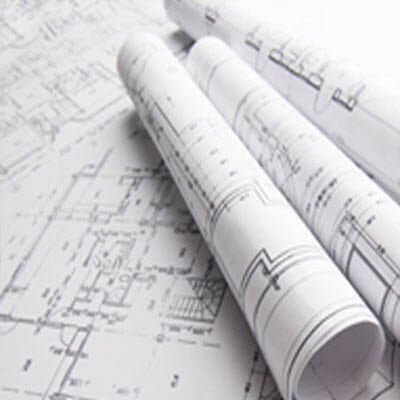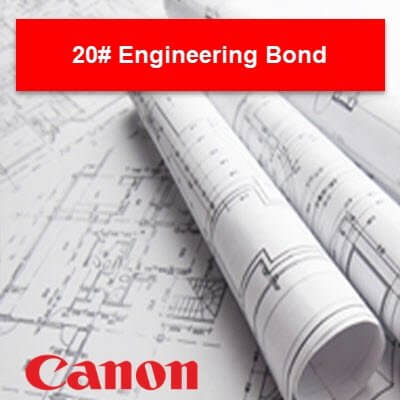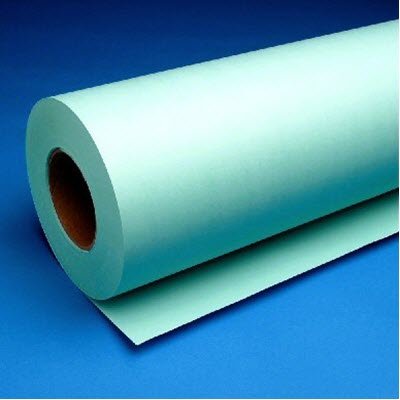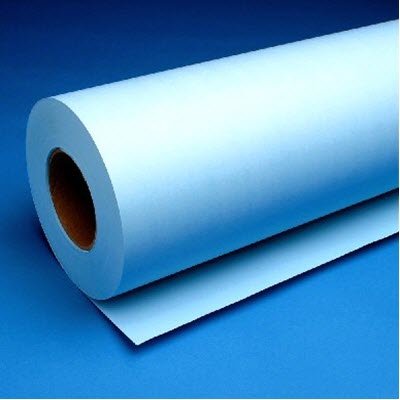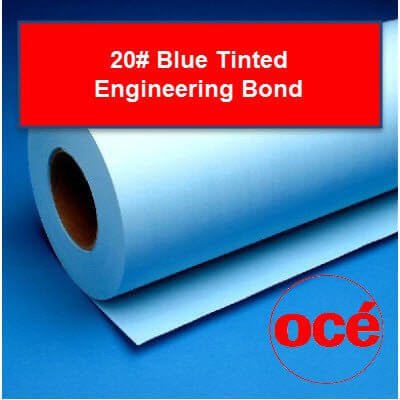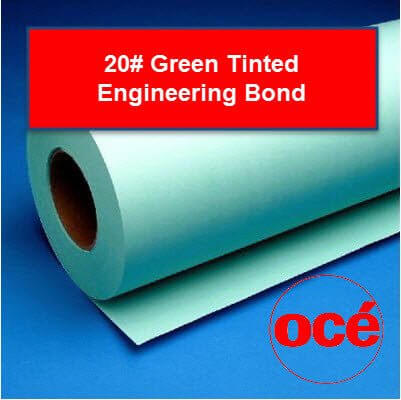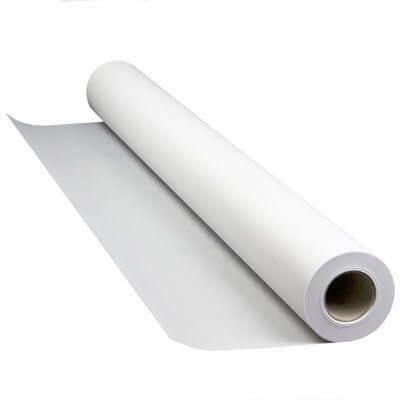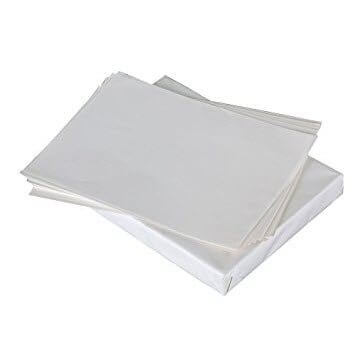Engineering bond paper delivers exceptional line clarity and durability for technical drawings, CAD plots, and architectural blueprints on wide-format toner plotters and inkjet printers ranging from 20 lb everyday bond ($45-65/roll) to premium 24 lb heavyweight options ($75-95/roll).
Our comprehensive engineering bond paper inventory includes weights of 18 lb, 20 lb, 22 lb, and 24 lb, available in widths of 24", 30", 34", and 36". It is compatible with HP DesignJet, Canon imagePROGRAF, Océ, Ricoh, and KIP toner plotters. From Houston to Dallas, Austin to San Antonio, Texas AEC professionals trust TAVCO for high-opacity bond paper with fast shipping and volume pricing.
Why choose engineering bond paper:
- Superior line definition — 96+ brightness rating ensures crisp CAD lines and precise technical detail reproduction
- Archival durability — Acid-free chemistry provides 50+ year document longevity for permanent records
- Universal compatibility — Optimized for both toner-based plotters and pigment inkjet systems
- Cost-effective volume options — 500' rolls reduce media changes and lower per-print costs by 30-40%
Engineering Bond Paper Comparison Guide
| Paper Weight | Width Options | Roll Length | Key Features |
|---|---|---|---|
| 18 lb Bond | 24", 30", 34", 36" | 500' rolls | Economy weight, 92 brightness |
| 20 lb Bond | 24", 30", 34", 36" | 500' rolls | Standard weight, 96 brightness |
| 22 lb Bond | 24", 30", 36" | 500' rolls | Medium weight, enhanced opacity |
| 24 lb Bond | 24", 30", 34", 36" | 500' rolls | Heavyweight, 98 brightness |
| 20 lb Recycled Bond | 24", 30", 36" | 500' rolls | 30% post-consumer content |
| 24 lb Coated Bond | 24", 30", 36" | 150' rolls | Inkjet optimized coating |
*Brightness ratings measured on industry-standard ISO scale. Roll lengths may vary by manufacturer and width.
Quick Selection Guide
- Best for construction sites: 20 lb Bond (durable, cost-effective, 500' rolls reduce changes)
- Best for architecture firms: 24 lb Bond (premium weight, superior opacity, professional finish)
- Best for engineering check sets: 18 lb Bond (economy pricing, adequate for internal review)
- Best for sustainable projects: 20 lb Recycled Bond (LEED credits, 30% recycled content)
- Best for color plots: 24 lb Coated Bond (optimized for inkjet, vibrant color reproduction)
Engineering Bond Paper Frequently Asked Questions
Quick Answer: Use 20 lb bond for daily CAD plots and check sets, 24 lb bond for client presentations and submittal drawings requiring a professional appearance.
What's the difference between 20 lb and 24 lb bond paper for engineering drawings?
For typical architecture and engineering workflows, 20 lb bond paper (75 gsm) serves as the industry-standard weight for daily CAD plots, blueprints, and internal check sets. It offers excellent line clarity with 96 brightness, handles well during rolling and storage, and costs approximately 30% less per square foot than heavier weights. Most AEC firms print 80-90% of their technical documents on 20 lb bond.
24 lb bond paper (90 gsm) provides premium weight and opacity for client-facing drawings, permit submittals, and presentation sets. The heavier stock resists show-through on double-sided prints, feels more substantial during client reviews, and withstands frequent handling at job sites. The extra weight reduces transparency from 8% to 4%, critical when printing dense technical details or overlapping line work. Expect to pay $75-95 per 500' roll versus $45-65 for 20 lb equivalents.
Quick Answer: Yes, engineering bond paper is compatible with both toner plotters (Océ, KIP, Xerox) and pigment inkjet plotters (HP DesignJet, Canon imagePROGRAF) for technical drawings.
Can I use engineering bond paper on both toner and inkjet plotters?
Standard engineering bond paper performs excellently on toner-based plotters, including Canon, Océ, KIP, Xerox, and Ricoh systems, which represent the traditional technology for high-volume technical printing in AEC environments. The uncoated surface accepts toner fusion perfectly, producing crisp 1200 dpi line work with zero smudging or feathering.
For pigment inkjet plotters like HP DesignJet XT-series and Canon imagePROGRAF TM-series, uncoated bond paper also works well but requires proper media settings. Select "Bond Paper" or "Plain Paper" in your printer driver, which adjusts ink density to prevent over-saturation. Pigment inks dry instantly on bond paper through absorption, though you may notice slightly softer line edges compared to toner output. For optimal inkjet results on bond paper, choose 24 lb coated bond, which features a microporous coating that sharpens line definition and prevents ink spread.
Avoid using engineering bond on dye-based inkjet printers (older consumer models), as dye inks will bleed and feather on uncoated paper. All commercial large-format plotters from HP, Canon, and Epson manufactured after 2010 use pigment ink systems compatible with bond paper.
Quick Answer: Engineering bond paper lasts 50+ years when stored properly (65°F, 50% humidity, away from light), far exceeding typical 10-year project retention requirements.
How long does engineering bond paper last for archival storage?
Acid-free engineering bond paper, manufactured to ANSI/NISO Z39.48 standards, provides over 50 years of longevity when stored in controlled conditions (65-70°F, 45-55% relative humidity, and minimal UV exposure). This archival rating exceeds the typical municipal and state requirements for construction document retention (7-10 years) and supports permanent record storage for landmark projects.
The key factor determining lifespan is acid content. Premium bond papers use alkaline chemistry with calcium carbonate buffering (pH 7.5-9.5), which prevents yellowing, brittleness, and ink degradation over decades. Economy bond papers may use acidic sizing agents that cause deterioration within 10-20 years, noticeable as brown edges and brittle sheets.
For maximum longevity, store rolled drawings in acid-free tubes in climate-controlled environments. Avoid attics, garages, or warehouses with temperature swings and humidity fluctuations. Texas's hot, humid climate accelerates paper aging, so archive storage in Houston, Dallas, and San Antonio requires dehumidification (40-50% RH) and temperature control (65-72°F) for long-term preservation. Our engineering bond papers meet archival standards, making them suitable for courthouse records, university archives, and permanent construction documentation.
Quick Answer: Choose 96+ brightness bond paper for CAD drawings to ensure crisp line contrast, readable fine text, and a professional appearance for client deliverables.
What brightness rating is required for engineering bond paper?
Brightness ratings measure paper whiteness on a 0-100 scale, with higher numbers indicating whiter paper that produces stronger contrast for black line work. For engineering and architectural drawings, target a brightness of 96+ to ensure CAD lines, dimension text, and technical details remain sharp and legible.
Standard 20 lb bond typically rates 94-96 brightness, adequate for daily check sets and internal documents. Premium 24 lb bond achieves 96-98 brightness, preferred for client presentations, permit submittals, and marketing renderings where paper appearance impacts professional perception. Economy 18 lb bond may rate 90-92 brightness, acceptable for high-volume printing where document permanence isn't critical (temporary field prints, draft reviews).
Brightness also impacts scan quality—96+ brightness paper provides better OCR accuracy and cleaner scan-to-PDF conversions because the higher contrast between paper and ink improves edge detection algorithms. For firms digitizing paper archives or creating searchable PDF drawing sets, the brightness difference between 92 and 96 ratings can improve text recognition accuracy by 15-20%.
Avoid confusing brightness with whiteness shade. Some "ultra-white" papers achieve high brightness through blue-white tinting (a cool shade) versus natural white (a warm shade). For engineering drawings, natural white bonds work universally, while blue-white bonds pair better with high-contrast inkjet rendering workflows.
Quick Answer: 20 lb recycled bond with 30% post-consumer content qualifies for LEED credits (MR Credit 1) and performs identically to virgin fiber bond for technical drawings.
Does recycled engineering bond paper work as well as virgin fiber paper?
Modern recycled engineering bond papers containing 30% post-consumer waste perform indistinguishably from virgin fiber bonds in line clarity, archival stability, and plotter compatibility. Manufacturing technology advances since 2015 enable recycled bonds to achieve 94-96 brightness, 50+ year archival ratings, and jam-free feeding on high-speed plotters—characteristics previously exclusive to virgin papers.
Recycled bonds qualify for LEED v4 MR Credit 1 (Building Life-Cycle Impact Reduction) by reducing embodied carbon 25-35% compared to virgin fiber production. For Texas projects pursuing LEED certification, specifying recycled bond paper documents material procurement decisions in construction submittals. The cost premium ranges from $0.01-0.03 per square foot ($5-15 per 500' roll), negligible compared to LEED certification value.
Performance considerations: Recycled bonds may show slightly higher curl in low-humidity environments (below 35% RH) and may exhibit 1-2% higher jam rates on poorly maintained plotters with worn feed rollers. For critical client deliverables, many firms use virgin fiber 24 lb bond for presentations while employing recycled 20 lb bond for internal check sets—balancing sustainability goals with quality requirements.
All TAVCO recycled bond papers meet Process Chlorine Free (PCF) standards and carry FSC Mix or Recycled certifications, supporting corporate sustainability reporting for architecture and engineering firms with environmental initiatives.
Texas Engineering Bond Paper Experts: TAVCO provides engineering bond paper. Our technical specialists assist architecture firms, engineering consultancies, and construction companies in optimizing paper selection for specific plotter models and application requirements. Call 866-254-8590 for volume pricing on 500' rolls, rush delivery for urgent projects, or technical guidance on bond paper specifications. Since 1984, we've supplied AEC professionals with reliable media solutions, expert installation support, and responsive local service that keeps your technical printing operations running efficiently.

